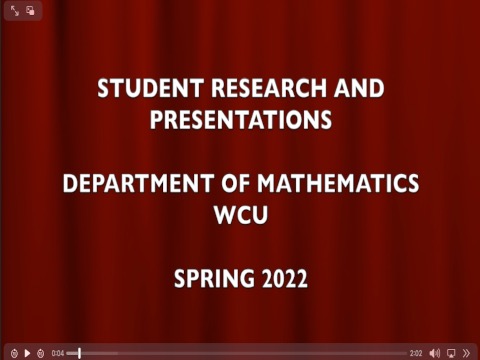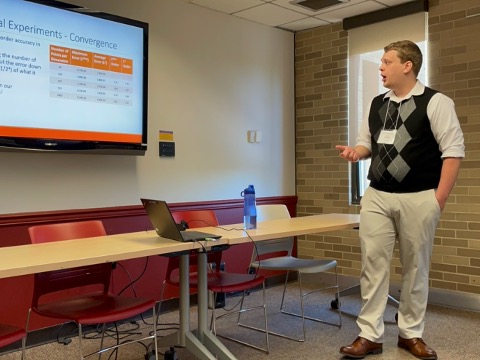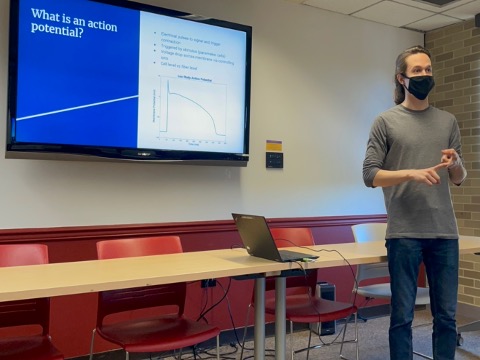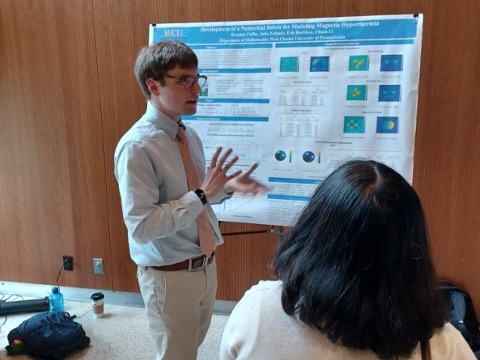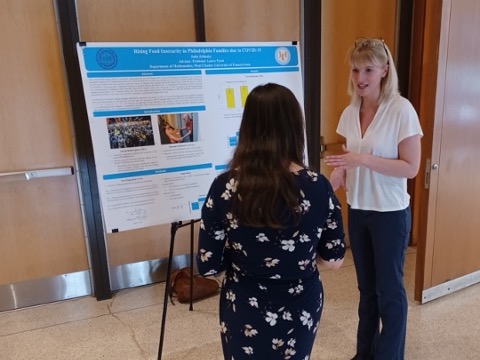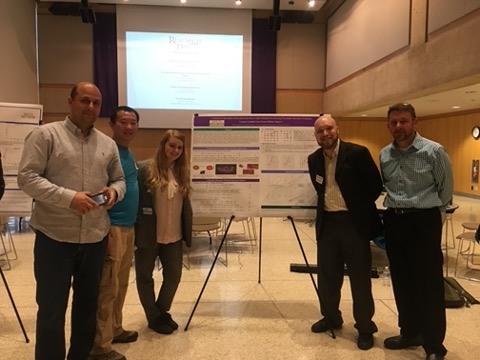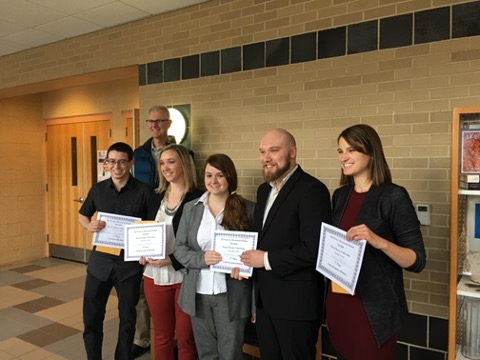Dr. Chuan Li
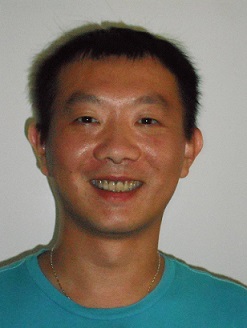
Contact Information
| Office: | UNA 118 |
| Phone: | (610) 436-1081 |
| Fax: | (610) 738-0578 |
| Dr. Chuan Li |
Education
- Ph.D., Applied Mathematics, University of Tennessee, Knoxville, TN, August, 2011
- M.S., Computational Mathematics, Ohio University, Athens, OH, May, 2005
- B.S., Mathematics, University of Science and Technology of China, Anhui, Hefei, P.R.China, September, 1999
- B.E., Computer Science, University of Science and Technology of China, Anhui, Hefei, P.R.China, September, 1999
About Dr. Chuan Li
Teaching
- Fall 2022
- MAT113 College Algebra and Functions
- MAT425 Numerical Analysis II
- MAT554 Scientific Computing
- Spring 2022
- MAT113 College Algebra and Functions
- MAT325 Numerical Analysis I
- MAT423 Applied Probability & MAT549 Industrial Mathematics II - Discrete Models
- MAT455 Industrial Math Practicum & MAT556 Industrial Practicum
- Fall 2021
- FYE100B First Year Experience
- MAT113 College Algebra and Functions
- MAT145 Calculus for the Life Sciences
- MAT425 Numerical Analysis II
- MAT455 Industrial Math Practicum (Individualized Instruction)
- Summer 2021
- MAT493 Math Modeling (Individualized Instruction)
- Spring 2021
- MAT113 College Algebra and Functions
- MAT325 Numerical Analysis I
- MAT423 Applied Probability
- MAT549 Industrial Math - Discrete Models
- MAT455 Industrial Math Practicum
- MAT556 Industrial Practicum - Disc
- Fall 2020
- FYE100B First Year Experience
- MAT113 College Algebra and Functions
- MAT425 Numerical Analysis II
- MAT554 Scientific Computing
- Spring 2020
- MAT113 College Algebra and Functions
- MAT145 Calculus for the life sciences
- MAT423 Applied Probability
- MAT549 Industrial Mathematics – Discrete models
- Fall 2019
- MAT145 Calculus for the life sciences
- MAT493 Mathematical Modeling
- MAT548 Industrial Mathematics – Continuous models
- Spring 2019
- MAT131 Precalculus
- MAT145 Calculus for the life sciences
- MAT325 Numerical Analysis I
- Fall 2018
- MAT113 College Algebra and Functions
- MAT131 Precalculus
- MAT555 Practicum (Individualized Instruction)
- Summer 2018
- MATQ30 Fundamentals of Algebra
- Spring 2018
- MAT261 Calculus III
- MAT554 Scientific Computing
- Fall 2017
- MAT261 Calculus III
- MAT548 Industrial Mathematics: Continuous Models
- Spring 2017
- MAT325 Computational Mathematics
- MAT343 Differential Equations
- Fall 2016
- MAT113 Algebra & Functions
- MAT343 Differential Equations
- MAT554 Scientific Computing
- Spring 2016
- MAT107 Algebra & Functions
- MAT108 Brief Calculus
- MAT343 Differential Equations
- Fall 2015
- MAT107 Algebra & Functions
- MAT343 Differential Equations
- Courses taught before 2015
Professional Experiment
- Associate Professor, 2020 - present, Department of Mathematics, West Chester University
- Assistant Professor, 2015 - 2020, Department of Mathematics, West Chester University
- Postdoc, 2014 - 2015, Department of Mathematics, University of Alabama
- Postdoc/Research Assistant, 2011 - 2014, Dr. Emil Alexov's Computational Biophysics & Bioinformatics Laboratory, Department of Physics and Astronomy, Clemson University
Research Interests
- Scientific (parallel) Computing
- Mathematical Biology:
- Numerical methods for solving interface problems
- Computing methods for calculating electrostatic potential and energies of systems comprised of biological macromolecules and their assemblages
- Action potentials calculation in the heart, cardiac physiology
- Bioheat equations
- Matched Interface and Boundary (MIB) methods for solving interface problems
- Numerical methods for solving Ordinary and Partial Differential Equations
- Google Scholar Profile
Ongoing Research Projects
Development of a Matched Interface and Boundary (MIB) method for solving interface problems with complex interfaces
Grant: This project is now supported by the Research in Mathematics and Sciences (RIMS) Award, College of Mathematics and Sciences, WCU, 2017-2018.
Involved Students: Cameron Campbell (undergraduate), Stacy Porten-Willson (undergraduate)
Collaborator: Prof. Shan Zhao, Professor of Mathematics, Department of Mathematics, University
of Alabama Zhihan Wei, PhD candidate, Department of Mathematics, University of Alabama
Description: This work aims to overcome the difficulties of previous matched Alternate Direction Implicit (ADI) method for solving parabolic equations with complex interfaces. In general parabolic interface problems, the discontinuities of a function and its flux across an interface are mathematically described by spatial-and-temporal-dependent jump conditions on the interface. Without appropriately addressing such conditions, the central difference spatial approximation is known to be inaccurate in the classical ADI schemes. This motivates the development of a matched ADI method, in which the central difference is locally corrected according to essentially one-dimensional (1D) jump conditions. Based on the Douglas ADI (D-ADI) method, this newly developed matched D-ADI method is unconditionally stable and restores the second order of accuracy in space for geometries with simple interfaces. In order to make the developed ADI method work for geometries with complex interfaces, a formal temporal discretization is formulated to avoid extra perturbations of the original matched ADI framework. Second, approximations to tangential derivatives are substantially improved in the tensor product decomposition of 2D or 3D jump conditions so that the essential 1D jump conditions become more stable.
Recent Activities:
- EPeDal Meeting April 1, 2017 at Kutztown University Congratulations to Cameron and Stacy for presenting their first research talk in this event.
- All Science Poster Day Fall 2016 Congratulations to Cameron and Stacy for winning the 2nd place of undergraduate student poster presentations in this event.
- Research Day October 2016 Cameron and Stacy presented their work, along with other Math students, in the poster display at a recent West Chester University Research Day.
Development of Schemes for Parallel Computing of the Electrostatics in Biological Systems: Implementation in DelPhi
Grant: This project is now supported by a NIH grant "New Generation DelPhi: large systems and beyond electrostatics" (NIH grant #: 5R01GM093937-07), 2017-2018.
Involved Students: Xiaojuan Cathy Yu (graduate)
Collaborator: Prof. Emil Alexov, Professor of Physics, Department of Physics and Astronomy, Clemson
University Dr. Zhe Jia, Postdoctoral Researcher, Department of Physics and Astronomy,
Clemson University
Description: Nowadays calculating the electrostatic potential and corresponding energies has become a standard computational approach for studying biomolecules and nano-objects immersed in water and salt phase. One most recognized math model in the area of molecular biology is the Poisson-Boltzmann Equation (PBE), for which no analytical solutions are available for irregular-shaped molecules and proteins, and the distribution of the potential can only be found numerically. However, no existing sequential PBE solver is ready to be utilized to solve PBE for large macromolecules and macromolecular complexes due to high computational time and memory requirements. In order to make the calculations feasible for large macromolecules and complexes, a set of computing schemes was introduced to parallelize the processes of molecular surface construction, numerical Successive Over Relaxation (SOR) iteration, and energy calculations. The parallelization schemes are implemented in the popular software DelPhi and results in speedup of several folds. As a demonstration of the efficiency and capability of this methodology, the electrostatic potential, and electric field distributions are calculated for several large macromolecules and complexes to illustrate their complex topology, which cannot be obtained by modeling the super-complex components alone.
Recent Activities:
- EPeDal Meeting April 1, 2017 at Kutztown University Congratulations to Cathy for presenting her first research talk in this event.
Parallel Computing the Minimized Molecular Surface (MMS) of macromolecules and large complexes
Involved Students: Ryan Moser (undergraduate)
Collaborator: Prof. Shan Zhao, Professor of Mathematics, Department of Mathematics, University
of Alabama
Description: This project is computationally oriented. Modeling biomolecular surface is a challenging task due to complicated molecular structures. The resulting surface has great impact on the accuracy of all biomolecular structures and interactions related studies and analysis. Conventional molecular surface (MS) models are lack of physical justification and usually admit geometrical singularities. In the contrast, a recently derived minimal molecular surface (MMS) model delivers minimized surface area and surface free energy, which occur naturally when a less polar macromolecule is immersed in a polar aquatic environment. A fast alternating direction implicit (ADI) algorithm has been developed to solve the governing differential equation for MMS generation. However, the computational cost of the sequential code is still prohibitively expensive when solving ultra large protein systems, such as large protein complexes consisting of one million atoms. In this project, we propose to introduce new parallel computing techniques to significantly improve the performance of the sequential program. A parallel computing software package, which is able to effectively model molecular surface for extremely large macromolecules and complexes, will be developed using the Message Passing Interface (MPI) library. Upon completion, the MMS program will be released as a free software package for academic and research purposes. Funds are requested to disseminate the research findings and showcase the software product to related research societies.
Recent Activities:
- All Science Poster Day Fall 2016 Ryan presented his work in the poster display at a recent West Chester University All Science Day.
Recent Grant Supporters
- 2017-2018, PI, Development of a New Matched Alternating Direction Implicit (ADI) Method for Solving Parabolic Interface Problems, Research in Mathematics and Sciences (RIMS) Award, College of Mathematics and Sciences, WCU, $6,496.
- 2017-2018, PI, Subcontract of Prof. Emil Alexov's NIH grant "New Generation DelPhi: large systems and beyond electrostatics" (NIH grant #: 5R01GM093937-07) for developing in DelPhi parallel computing algorithms and numerical methods for solving time-dependent differential equations with numerous applications in molecular biology, $54,857.
- 2015-2017, Co-PI (PI: Dr. Baoling Ma from Millersville University), A mathematical model for the interactions between Plasmodium falciparum malaria parasite and host immune response (MU ID#: M01039795), Millersville University Student Grants for Research and Creative Activity, $365.
Student Presentations
- Congratulations to all students for their excellent oral/poster presentations at WCU in Spring 2022.
- Eric Boerman, Developing an FFT-Accelerated High-Order Solver for Heat Equations Over Irregular Domains , Research & Creative Activity Day, WCU, Apr 29, 2022.
- Scott Moon, Cardiac Action Potential – The Luo-Rudy Model , Research & Creative Activity Day, WCU, Apr 29, 2022.
- Brendan Coffey, Development of a Numerical Solver for Modeling Magnetic Hyperthermia , CSM Student Poster Session, WCU, May 2, 2022.
- Eric Boerman, Parallel Computing of Action Potentials in the Hodgkin-Huxley Model via the Parareal Algorithm , Research & Creative Activity Day, WCU, Apr 29, 2021.
- Mick Bauer, Solving the Heat Equation with Interfaces , Research & Creative Activity Day, WCU, Apr 29, 2021.
- Henry Brown, Solving Parabolic Interface Problems with a Finite Element Method , Research & Creative Activity Day, WCU, Apr 29, 2021.
- Rex Llewellyn, Matched Interface and Boundary Method for Solving the Heat Equation with Interfaces , CSM Student Poster Session, WCU, Apr 27, 2021.
- Khanh Pham and Katherine Peltier, Parallel Computing of Action Potentials in the Hodgkin-Huxley Model via the Parareal Algorithm , CSM Student Poster Session, WCU, Apr 27, 2021.
- Congratulations to all students for their excellent work on the WCU Research and Creative Activity Day in Fall 2016.
- Cameron Campbell and Stacy Porten-Willson, Finding Efficient and Accurate Ways to Solve Interface Problems , All Science Day, WCU, Nov 30, 2016.
- Cameron Campbell and Stacy Porten-Willson, A Matched Alternative Direction Interface (ADI) Method For Solving Parabolic Interface Problems , Research and Creative Activity Day, WCU, Oct 7, 2016.
Tutorials created by students with Dr. Chuan Li
Publications
- Li, C., Ren, Y., Long, G., Boerman, E., Zhao, S. (2022). A Fast Sine Transform Accelerated High-Order Finite Difference Method for Parabolic Problems over Irregular Domains . Preprint.
- Li, C., Long, G., Li, Y. and Zhao, S. (2021). Alternating Direction Implicit (ADI) Methods for Solving Two-Dimensional Parabolic Interface Problems with Variable Coefficients . Computation, 9(7):79.
- Li, C., McGowan, M., Alexov, E. and Zhao, S. (2020). A Newton-like iterative method implemented in the DelPhi for solving the nonlinear Poisson-Boltzmann equation . Mathematical Biosciences and Engineering, 17(6).
- Li, C., Wei, Z., Long, G., Campbell, C., Ashlyn, S., & Zhao, S. (2020). Alternating direction ghost-fluid methods for solving the heat equation with interfaces . Computers & Mathematics with Applications, 80(5), 714-732.
- Panday, S. K., Shashikala, M. H., Koirala, M., Pahari, S., Chakrvorty, A., Peng, Y., ... & Alexov, E. (2019). Modeling electrostatics in molecular biology: A tutorial of DelPhi and associated resources [Article v1. 0] . Living Journal of Computational Molecular Science, 1(2).
- Ma, B., Li, C., & Warner, J. (2019). Structured mathematical models to investigate the interactions between Plasmodium falciparum malaria parasites and host immune response . Mathematical Biosciences, 310, 65-75.
- Li, C., Jia, Z., ... & Alexov, E. (2019). DelPhi suite: new developments and review of functionalities . Journal of computational chemistry, 40(28), 2502-2508.
- Wei, Z., Li, C., & Zhao, S. (2018). A spatially second order alternating direction implicit (ADI) method for three dimensional parabolic interface problems . Computers & Mathematics with Applications, 75(6), 2173-2192.
- Li, C., & Zhao, S. (2017). A matched Peaceman–Rachford ADI method for solving parabolic interface problems . Applied Mathematics and Computation, 299, 28-44.
- Li, L., Li, C., & Alexov, E. (2014). On the modeling of polar component of solvation energy using smooth Gaussian-based dielectric function . Journal of Theoretical and Computational Chemistry, 13(03), 1440002.
- Campbell, B., Petukh, M., Alexov, E., & Li, C. (2014). On the electrostatic properties of homodimeric proteins . Journal of Theoretical and Computational Chemistry, 13(03), 1440007.
- Li, L., Li, C., Zhang, Z., & Alexov, E. (2013). On the dielectric “constant” of proteins: smooth dielectric function for macromolecular modeling and its implementation in DelPhi . Journal of chemical theory and computation, 9(4), 2126-2136.
- Li, C., Petukh, M., Li, L., & Alexov, E. (2013). Continuous development of schemes for parallel computing of the electrostatics in biological systems: Implementation in DelPhi . Journal of computational chemistry, 34(22), 1949-1960.
- Li, C., Li, L., Petukh, M., & Alexov, E. (2013). Progress in developing Poisson-Boltzmann equation solvers . Computational and Mathematical Biophysics, 1(2013), 42-62.
- Smith, N., Campbell, B., Li, L., Li, C., & Alexov, E. (2012). Protein Nano-Object Integrator (ProNOI) for generating atomic style objects for molecular modeling . BMC structural biology, 12(1), 1-10.
- Smith, N., Witham, S., Sarkar, S., Zhang, J., Li, L., Li, C., & Alexov, E. (2012). DelPhi web server v2: incorporating atomic-style geometrical figures into the computational protocol . Bioinformatics, 28(12), 1655-1657.
- Petukh, M., Zhenirovskyy, M., Li, C., Li, L., Wang, L., & Alexov, E. (2012). Predicting nonspecific ion binding using DelPhi . Biophysical journal, 102(12), 2885-2893.
- Li, L., Li, C., Sarkar, S., Zhang, J., Witham, S., Zhang, Z., ... & Alexov, E. (2012). DelPhi: a comprehensive suite for DelPhi software and associated resources . BMC biophysics, 5(1), 1-11.
- Li, C., Alexiades, V., & Buchanan, J. W. (2012). Robustness of Action Potentials in Cardiac Myocytes . Proceedings of Dynamic Systems and Applications, 6, 241-247.
- Li, C., Li, L., Zhang, J., & Alexov, E. (2012). Highly efficient and exact method for parallelization of grid‐based algorithms and its implementation in DelPhi . Journal of computational chemistry, 33(24), 1960-1966.
- Li, C. (2011). A Time-and-space Parallelized Algorithm for the Cable Equation . PhD dissertation, University of Tennessee.
- Li, C., & Alexiades, V. (2010). Comparison of time stepping schemes on the cable equation . Electronic J of Differential Equations, 189-196.
- Li, C., & Alexiades, V. (2010). Time Stepping for the cable equation, Part 2: Parallel performance . Proceedings of Neural, Parallel & Scientific Computations, 4, 247-251.
- Li, C., & Alexiades, V. (2010). Time stepping for the cable equation, Part 1: Serial performance . Proceedings of Neural, Parallel & Scientific Computations, 4, 241-246.
Invited Talks
- Improvements on a matched interface and boundary (MIB) method for solving parabolic interface problems, SIAM CSS 2016, University of Arkansas at Little Rock, , September 30 – October 2, 2016
- High-performance parallel computing algorithms for calculating electrostatic potentials and energies for large biological macromolecules and their applications in DelPhi, The Tenth International Conference on Scientific Computing and Applications (ICSCA2016), Toronto, Ontario, June 6-10, 2016
- Parabolic Interface Problems and Their Applications in Computational Biophysics, joint math colloquium at Millersville University and Franklin & Marshall College, Millersville University, October 1, 2015
- A matched Alternative Direction Implicit (ADI) method for solving 2D parabolic interface problems, 1st Annual Meeting of SIAM Central States Section, Missouri University of Science and Technology, April 11-12, 2015
- Continuous development of a matched Alternative Direction Implicit (ADI) method for solving parabolic interface problems, SIAM-SEAS 2015, University of Alabama at Birmingham, March 20-22, 2015
- Poisson-Boltzmann equation, electrostatics and parallel computing, Applied Math seminar, Department of Mathematics, University of Alabama, September 19, 2014
- Parallel computing of calculating electrostatic potential and energies for large macromolecules and complexes,SEARCDE 2013, University of Tennessee, Knoxville, September 21-22, 2013
- Revealing the role of electrostatics in guiding long-range electron carries, 246th ACS National Meeting, Indianapolis, Indiana, September 8-12, 2013
- Parallel computing techniques in DelPhi to solve the Poisson-Boltzmann equation and calculate electrostatic energies of biological macromolecules, 9th Mississippi State-UAB Conference on Differential Equations and Computational Simulations, Mississippi State University, October 4-6, 2012
- Computer parallelization of continuum electrostatics: Implementation in DelPhi, Bio-seminar, Clemson University, September 25, 2012
- Parallelized DelPhi: a multi-processor Poisson-Boltzmann solver to calculate electrostatic energies of biological macromolecules, 244th ACS National Meeting & Exposition, Philadelphia, PA, Auguest 19-23, 2012
- Comparison of parallel algorithms for solving the cable equation, 31st Southeastern-Atlantic Regional Conference on Differential Equations, Georgia Southern University, September 30- October 1, 2011
- A time-and-space parallel scheme on the cable equation, Bio-seminar, Clemson University, August 31, 2011
- Time and space parallelization using the Parareal algorithm, 30th Southeastern-Atlantic Regional Conference on Differential Equations, Virginia Tech, October 1-2, 2010
- Time stepping for the cable equation, part 2: parallel performance, 4th International Conference on Neural, Parallel & Scientific Computations, Morehouse College, Auguest 11-14, 2010
- Comparison of time stepping schemes on the cable equation, 8th Differential Equations & Computational Simulations, Mississippi State-UAB Conference, Mississippi State University, May 7-9, 2009
- Representation of functions and operators in L2[0,1] using multiwavelet bases, 7th Differential Equations & Computational Simulations, Mississippi State-UAB Conference, University of Alabama at Birmingham, October 31 - November 2, 2007
Poster Presentations
- Multi-level and interleaved (MLIPB) method for parallel computing of the electrostatics and its application, Biophysical Society 57th Annual Meeting, Philadelphia, Pennsylvania February 2-6, 2013
- New parallelized DelPhi: Fast and efficient Poisson-Boltzmann solver to calculate electrostatics of large supramolecular structures, Biophysical Society 56th Annual Meeting, San Diego, California, February 25-29, 2012
- Algorithms for solving the nonlinear Poisson-Boltzmann equation in macromolecular electrostatics, Annual research symposium in the Dept. of Physics and Astronomy, Clemson University, Aug 22, 2011
Academic Activities
- Poster reviewer at Made in Millersville 2016, Millersville University, Millersville, PA, April 21, 2016
- 2015 Joint Mathematics Meetings (JMM), San Antonio, TX, January 10-13, 2015
- 10th Mississippi State Conference on Differential Equations and Computational Simulations, Mississippi State University, Starkville, MS, October 23-25, 2014
- Workshop in the International Conference of High Performance Computing, Networking, Storage and Analysis (SC12), Salt Lake City, Utah, November 10-11, 2012
- Student internship in Computer Science & Mathematics Division at Oak Ridge National Laboratory (ORNL), Oak Ridge, TN, May-Aug 2006
Super Computing Resources
Related Links
- M.S. in Applied and Computational Mathematics at WCU
- Prof. Shan Zhao, Department of Mathematics, University of Alabama, Tuscaloosa, UA
- Prof. Emil Alexov's Computational Biophysics and Bioinformatics Lab, Department of Physics and Astronomy, Clemson University, SC
- Prof. Vasilios Alexiades, Department of Mathematics, University of Tennessee, Knoxville, TN

